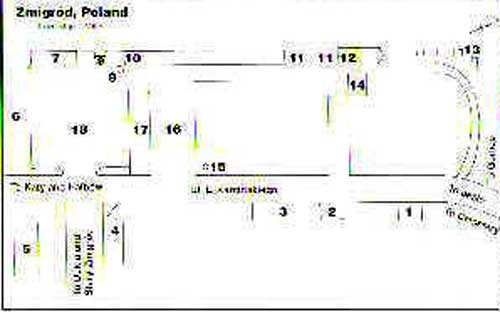The original KehilaLinks page was developed and maintained by Phyllis Kramer z"l until 2019. Copyright © 2000. Since Jan,2003 you are visitor:

This KehilaLinks page was modified by Jeff Alexander.
The original KehilaLinks page was developed and maintained by
Phyllis Kramer z"l until 2019. Copyright © 2000. Since Jan,2003
you are visitor:
We are very fortunate to have been able to collect some
of Max Findling and Nathan Laks' Recollections of Early Life in
Zmigród,  and we are delighted to present them to you.
and we are delighted to present them to you.
Very sad news...In april of 2009 Max Findling passed on.
Max was so important to our small group of genealogists..he
became family...he made our genealogy come to life...he was that
connection to the past that was thoughtful, joyful and
meaningful...he will always be in our hearts and we know he has
gone to a wonderful place where we'll find him again.
The following is an exerpt from the testimony Max gave: 
From Max Findling:
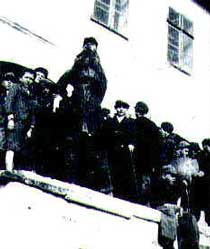 Everyone would go to
the square in front of the church. They would hang the Judosz by
the legs from the highest window of the church and call out
nasty names for the Jews. The Jews stood on the other side (all
around the church were mostly Jewish houses). The Jewish
community wrote to the Polish police...they would come, but
would not interfere. In the afternoon, they would throw the
puppet down from the church window, put it up on sticks and take
it to the rabbi's house where they would stand in front of the
window and throw garbage before moving on to the homes of other
well-known Jews. This lasted for about hour. Fights would break
out. Then they would take the Judosz to the bridge over the
Wisloka River (pronounced Visloka), pour gasoline on it, set it
on fire, and throw it into water.
Everyone would go to
the square in front of the church. They would hang the Judosz by
the legs from the highest window of the church and call out
nasty names for the Jews. The Jews stood on the other side (all
around the church were mostly Jewish houses). The Jewish
community wrote to the Polish police...they would come, but
would not interfere. In the afternoon, they would throw the
puppet down from the church window, put it up on sticks and take
it to the rabbi's house where they would stand in front of the
window and throw garbage before moving on to the homes of other
well-known Jews. This lasted for about hour. Fights would break
out. Then they would take the Judosz to the bridge over the
Wisloka River (pronounced Visloka), pour gasoline on it, set it
on fire, and throw it into water. The year the Germans came, the Poles thought that the Germans would like their display of anti-Semitism. However, when the Germans saw thousands of Poles with sticks coming into town, they thought it was an uprising and they shot a few demonstrators. Then they brought in a wagon with horses and put the dead on the wagon to be taken away for burial. In Zmigród, there was a man in City Hall who made public announcements by beating a big drum to attract attention. He beat the drum to announce that the uprising was over.
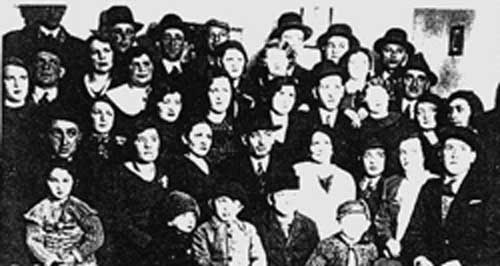
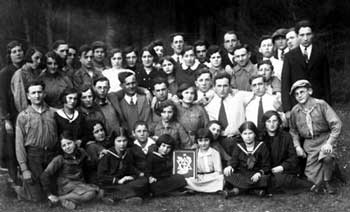
More Stories From Max Findling: Cheders and Schools: Behind the shul were two buildings, including a cheddar for poorer children; richer children went to smaller, more private chedders. There were also chedders of higher learning. I went to Rabbi Eller Inkberg to learn German; we learned to read Gutish (old German), not like you read now. The language in my time was Polish but before World War I, Zmigród was part of the (German-speaking) Austrian Empire. There was school for seven grades. Most children (Jews and Polish) attended. The environment at school was very anti-Semitic because the Jewish students were the best students; there were always fights. I studied history, spelling, language, geography and arithmetic. Boys wore peyes. The Polish boys would try to rip off the yamalkas, and they would bring pork to school and try to make the Jews eat it. We went to public school until 1:00 PM; then we walked to cheddar, where we stayed until evening (after mincha). To walk home in the dark, we would make a torch out of potato and candle. Everyone went to school. The girls had separate schools.
When someone died, it was necessary to pay the head of the
Jewish Community in order to get permission to bury. How much
you paid depended upon what you were "worth". When Herschel
Volter died, there was friction between the two
groups of Jewish people; Sinai Halberstam was the Rabbi.
Although Herschel Volter's wife Gittel only baked bread in her
house, they set a large amount for permission to bury. Hersel
Volter was laying in the house 4 days, much longer than called
for by Jewish law. His grandson Leiser Beer, who was on
vacation from the Polish Army, took 10 from his family, went
to the cemetery and dug a grave. The came with police but they
could not stop the family.
In the winter, it was difficult to bury the dead. We would put
wood on the grave site and burn it in order to get the ground
soft enough to dig.
I remember a ritual to pass on the good qualities of the dead
to a young child; when my uncle Leibish Findling died, my
father brought in a small child, about a year old, and they
moved Leibish's hand over the child's body.
The Passover Sedar: The pots and pans were made Kosher for Passover; they would be placed in large tubs of water, and red hot stones would be added. We made the wine in our own home by bringing up grapes, and mixing them with water. When we took the grapes out, we had wine. We sold the humitz to the goyem. Sukkot: If you owned a house, you made a Sukkah in the house by opening the skylights in the roof and sitting under them.
We had a relative named Itche Schiff, from Zidovska, living with us; he had seven sons in America. They would each send him money every month, but he had little to spend it on. He did, however, build a gravestone for his grave, which he kept in the house. On Chanukah and Purim, this man would set up a table in the street; the table had two drawers of money, one drawer of dollars and one drawer of zlotys. From the table he would distribute the money. Government Buildings: Zmigród had a jail, post office, school and City Hall. There was no train; the nearest train was in Jaslo. Clothing: Everybody wore a hat, but the women in Zmigród did not wear sheitels (wigs).
From Nathan Laks
The New Synagogue is on the left, the Old Synagogue in the center, and Hene Eisenberg's shop is on the right.
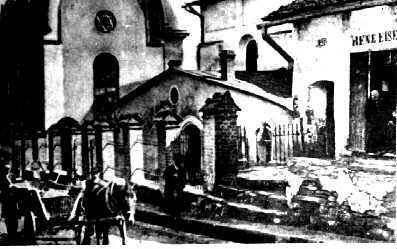
The Laks family is pictured at the right in 1938, in Zmigrod.
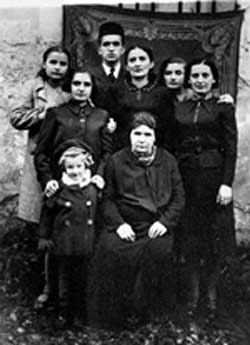
I found this story while searching the web for Zmigrod; you can
view the site at
http://fodz.pl/?d=5&id=59&l=en. And you can view many
photographs from Zmigrod at this site:
http://www.polin.org.pl/cities/69/start/
Students from the Mikolaj Kopernik Complex of Schools decided to take care of the cultural heritage of former Jewish inhabitants of Nowy Zmigród. For over three hundred years Jews formed an important part of the community in the Zmigród region. They started to settle here in the beginnings of the 17th century, while Zmigród was a private town. Soon, the stone synagogue was built and in the middle of the 17th century an estimated 700 Jews inhabited the town. Most of them were traders. Unfortunately, the rapid development and growing wealth of Jewish minority, combined with living in an isolated community, became the source of the increasing antagonism between Poles and Jews.
With the outbreak of World War II Nazis destined all Polish Jews to perish. Majority of Zmigród Jews were murdered in July 1942 in the Halbowski Forest near Krepna. About 40-50 people were killed at the local Jewish cemetery. The remaining ones were deported to death camps in Belzec and Plaszów.
The foregoing information is only a little part of a long and rich history of Jews from Nowy Zmigród. We want our students, as well as the local community, to be aware of these facts, because the memory of what had happened here should prevail in people’s hearts for eternity. The following generations must not forget about the past, which is painful, but at the same time authentic. The Jewish heritage is a significant part of our local history.
We have already collected much information about this particular minority, among them rare photographs, copies of some documents, short reports and articles from local newspaper “The Zmigród Region” concerning our research.
Very important part of our activity is to interview people who still remember times when Jews were living in this region. In our archives, we have several stories about their rich culture and customs of the everyday life. We are also looking for memoirs written by Jews, the essential one for us came from Nathan Laks, who was born and grew up in our town.
In November, we cleaned up the Jewish cemetery, catalogued it and made some photographs to commemorate this place. The size of the cemetery is 0.2 ha and it is the same as it was before the World War II. There are approximately 200 headstones originating from 18th, 19th and 20th century, most of them in unchanged position. The gravestones are made of smoothed sandstone with the inscriptions in Hebrew, several have carved ornaments. In January we once again came to the cemetery, this time to polish some headstones. The effects of our work can be seen on a school exhibition.
Editor's note: Isn't this wonderful!!! I wrote to the web page master and got this response in December of 2008:
Dear Phyllis,
Thank you for contacting us; your e-mail was a very pleasant
surprise! Although we do not have yet the pictures of all the
matzevot at the cemetery in Nowy Zmigrod, we started cooperation
with a local historical society which recently received
permission from the actual owner to start cleaning works at the
cemetery grounds. We supported the initiative and we are
expecting to see its first results quite soon. Probably any
large scale cleaning will not start until spring 2009, after the
snow melts, but the first steps have already been taken.
I’ll ask our local contact to produce more pictures, however he recently reported that the cemetery is so overgrown that it’s very difficult to have a clear view on the matzevot. After the cleaning though it will be much easier and I’m sure we will be able to help you with the list.
We will also be developing the section dedicated to Nowy Zmigrod on our POLIN web portal. I’ll be glad to add the link to your website there. I already visited it and I’m quite impressed by the huge amount of information it contains!
We will stay in contact with you. Kind regards,
Marcin Bartosiewicz
Administrator of the POLIN web portal
Foundation for the Preservation of Jewish Heritage in Poland
Grzybowska 2/44,00-131 Warsaw, Poland, tel. +48 22 436 60 00,
fax +48 22 436 06 58
marcin.bartosiewicz@fodz.pl Return
to Table of Contents
An excellent history of the cemetery is at http://www.kirkuty.xip.pl/nowyzmigrod.htm.
Following are some excerpts (via Google translate):
The Jewish cemetery in Nowy Zmigród is located in the north-eastern part of the village, on the eastern side of ul. Jasielska, about 1 km from the market square. The cemetery occupies a plot similar in shape to an elongated rectangle, with an approximate size of 60 x 310 m and a surface area of ??about 1,850 sq m. The necropolis lies on the slope of a hill, gently sloping towards the north-east. Throughout history, it was a place of burials of the dead not only from Nowe Zmigród, but also from other towns, including Debowiec, Gorlice, Jaslo and Osiek. It can be assumed that at least a few thousand people were buried there during the existence of the cemetery....
In the years of the Holocaust, the cemetery became the scene of execution. During the war, the Germans partly devastated the cemetery. Since 2008, the Society of Friends of New Zmigród, run by Jerzy Debec, has been taking care of the neglected, littered and overgrown with wild vegetation....In the work they helped, among others firefighters from the State Fire Service from Jaslo and high school students from Bet Shemesh in Israel. ... In response to the Society's appeal, a dozen or so gravestones returned to the cemetery, located on private premises. The plans are to renovate the fence.
In 2014, Katarzyna Dudek - a graduate of the Judaic Institute of the Jagiellonian University and a PhD student at the Faculty of Sociology and History of the University of Rzeszów, made documentation of 285 tombstones in the south-eastern part of the cemetery....Within the necropolis, according to estimated data, about 1000 tombstones in a different state of preservation survived. There is a clear distinction between the old (from the west) and the new (from the east) part of the cemetery. The largest concentration of matzevot occurs in the central sectors, where a number of tombstones from the 18th century have been preserved. The oldest one is dated to 1742. Most are made of fine-grained sandstone. In the latest part of the cemetery you can also find matzevot made of concrete and concrete frames of graves. Here are also tombstones issued after the war: Chaim Isaak Citronenbaum, Pinkas Wohlmut and a monument on a mass grave. Typical rectangular stakes, closed arches or triangles dominate. In the foreheads, parts of the matzevot were carved with reliefs, characteristic of the sepulchral art of Ashkenazi Jews, among others: hands in a blessing gesture, candlesticks, pitchers, crowns, birds (eagle among others), lions. Matzevot decorating also contains architectural and plant motifs, framing the epitaph fields and symbols in the finials....Pursuant to the law on the relationship between the State and the Jewish religious communities in the Republic of Poland, the legal owner of the cemetery is the Foundation for the Preservation of Jewish Heritage. ... Due to its historical and landscape values, the object is one of the most interesting Jewish cemeteries in the Podkarpackie Province.
the following was taken from the web at http://jgaliciabukovina.net/139343/article/field-school-nowy-%C5%BCmigr%C3%B3d (click here) about a trip in 2012 of Israeli students. The article was written in January of 2013.
As part of its ongoing projects, Jewish Galicia and Bukovina Association sent a group of students from ACE High School in Israel (www.aceisrael.com) on a heritage trip to Western Galicia, Poland. The trip was coordinated and run by Nesivos Yeshiva Tours. A total of eight students and two staff spent just over a week in Poland, three days of which were dedicated entirely to the cemetery renovation and documentation in the village of Nowy Zmigrod. Nowy Zmigród, until 1946 called Zmigród, is a village in Jaslo County and sits at the south-eastern corner of Poland.
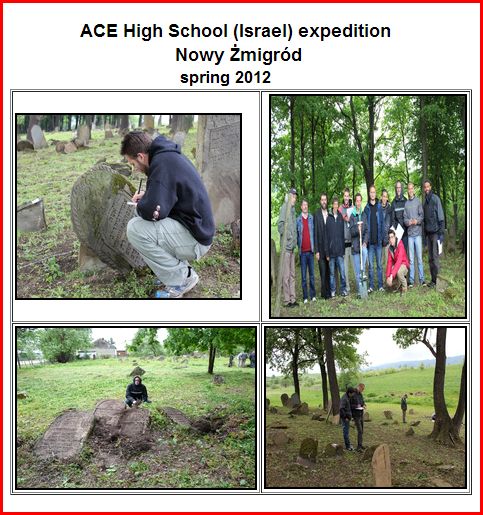
The population of Zmigród over the last few centuries has fluctuated from 1,500 to 3,000 people. At times Jews constituted 60% of Zmigord’s inhabitants. The first information about Jews in Zmigród dates to 1410 when Jews were permitted to settle throughout the city. A large two-storey synagogue was built there in the 16th century.
The Jewish community of Zmigród had under its jurisdiction other Jewish Kehillas including Jaslo and Gorlice. The latter communities had to bring their dead for burial in the Zmigród cemetery. In 1765 the total Jewish population of the city and the neighboring areas consisted of 1,926 people. A great exodus took place during World War I, when many of the Jews of Zmigród left for overseas .Most Jews in Zmigród were Hasidic, largely following the Sanzer Rebbe. After Zmigród lost its city status in 1919, the Jewish population dropped to 800 people by 1939.....
The ACE High School group was warmly greeted in Nowy Zmigrod by Rabbi Natan Dudek Levin from the Rabbinic Commission for Cemeteries in Poland and by administration and senior class of the local high school who showed a presentation that they had created about the history of Jews in Nowy Zmigrod. In addition, the Director of Culture for the region spoke to the group and accompanied it for much of its work. A local internet TV videographer as well as a news-crew filmed the group's work and interviewed its members.
Despite inclement weather, the team documented over three hundred graves stones, mapped out the cemetery, and did general maintenance and cleaning of the cemetery. All of the students found this project to be invigorating education and emotionally and are looking forward to being part of such ventures again in the future.

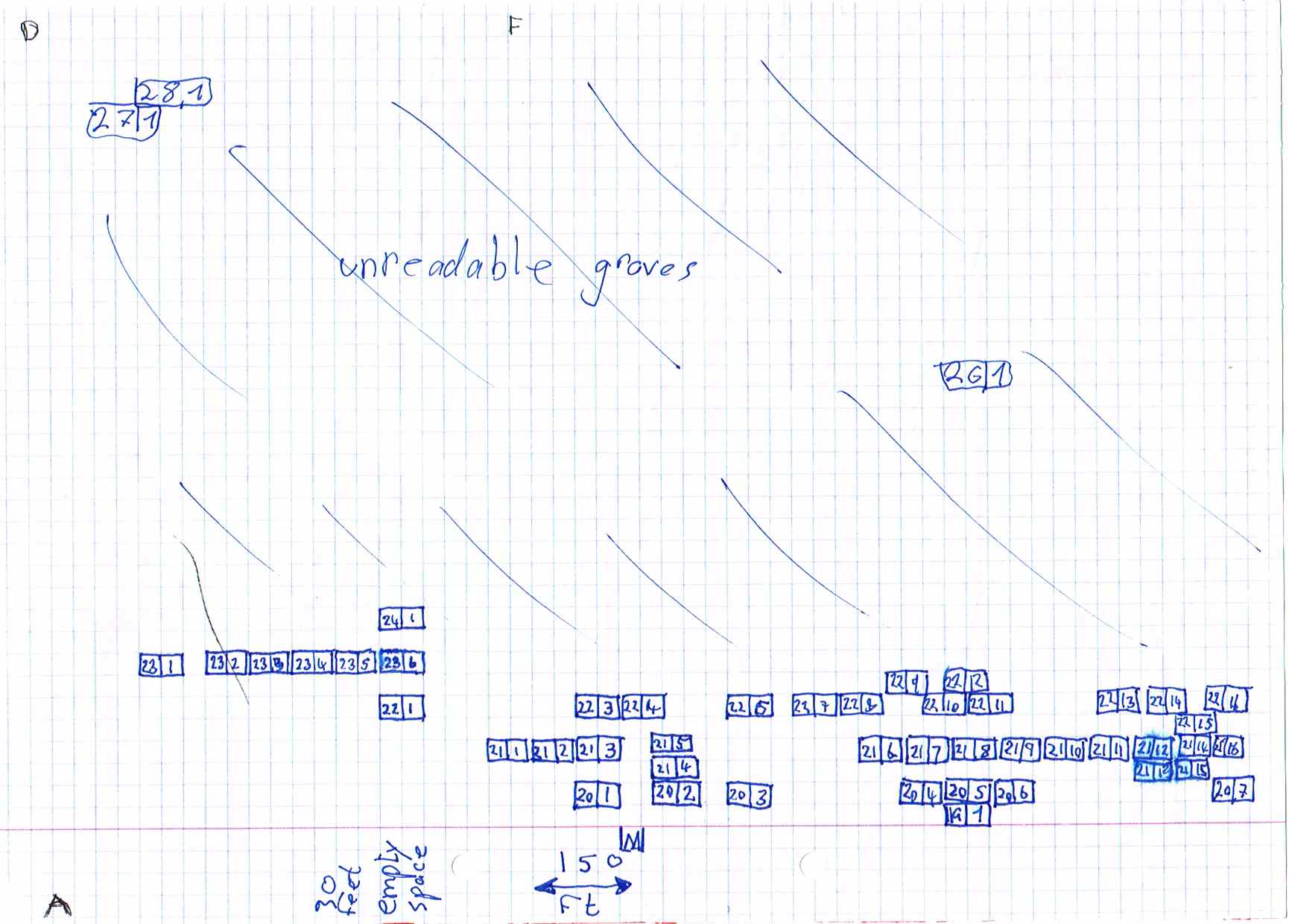
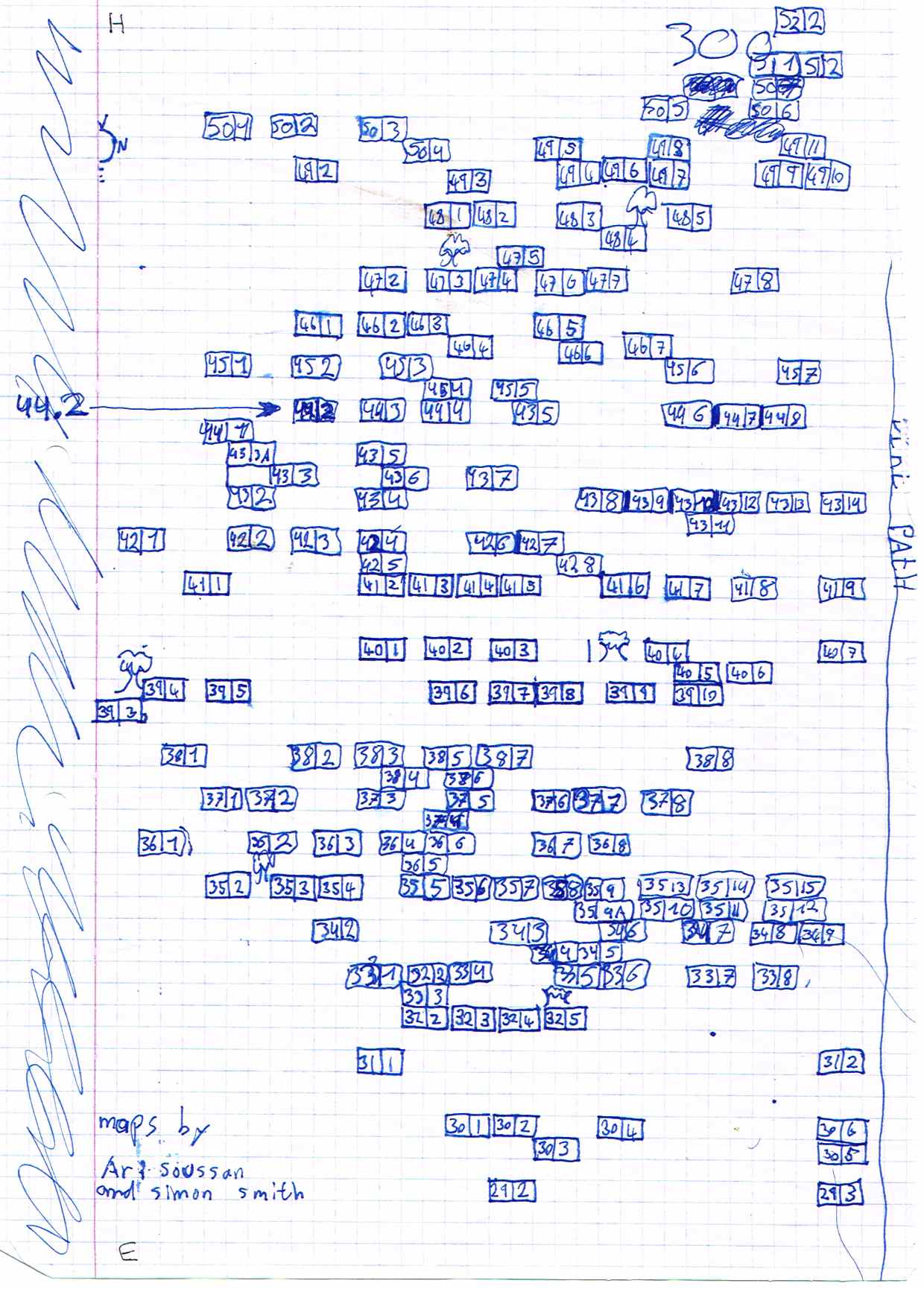
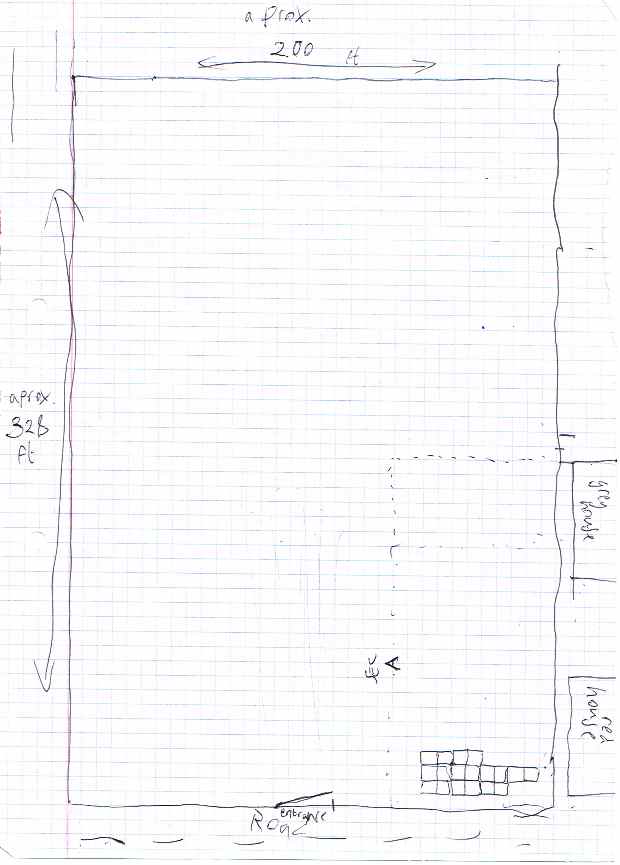
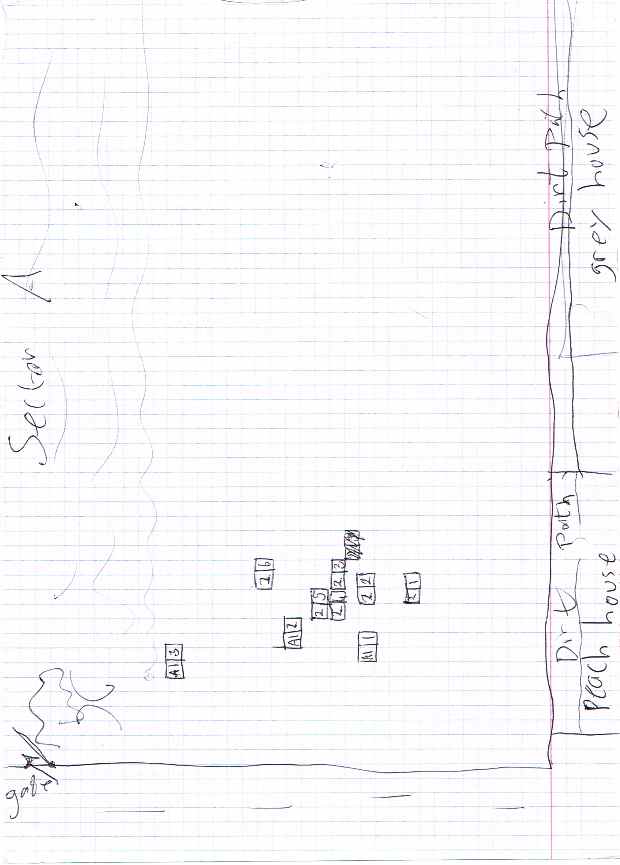
Hello ladies
After a long break again in August, i am asking you to insert
these photos on the Zmigrod page at JewishGen.org. These are
photographs of the work carried out at the cemetery in Nowy
Zmigrod.
Our company is still working hard to restore the beauty in the
Jewish cemetery in Zmigrod.
I venture to ask again for financial assistance for these activities. The cemetery in New Zmigrod is already very much done. If you live for the good of the cemetery help us. We want to preserve history and the resting place of our residents. Since you descendants will depend on whether it was fixed up. I greet and ask for help.
Jerzy Debiec, 38-230 Nowy Zmigród, ul. Podwale 18, Polska
mobile phone (48) 606953872 e-mail goknz@wp.pl 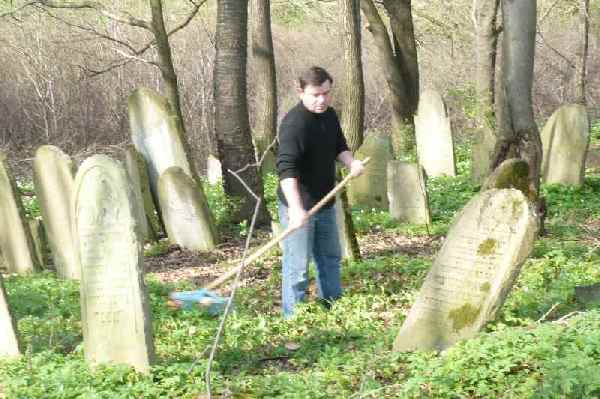
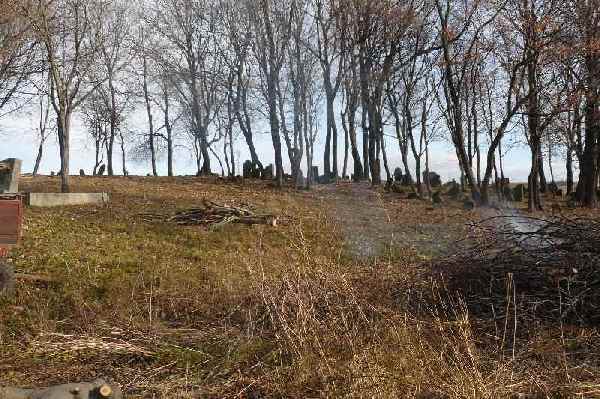
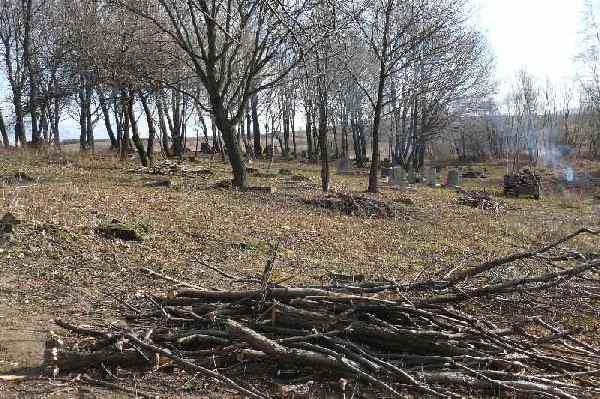
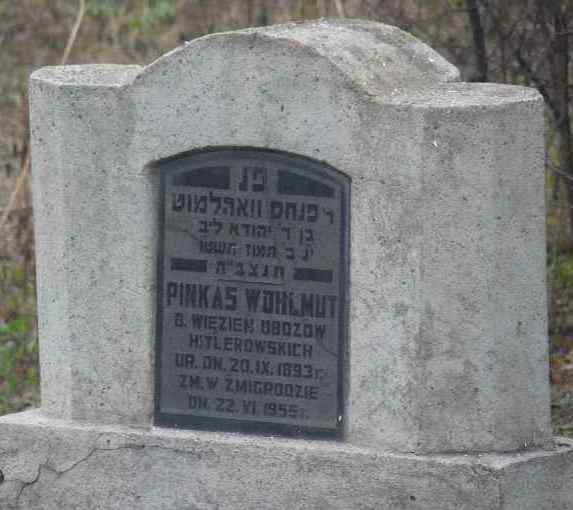
. . . .
Dear Ms. Kramer,
my name is Jerzy Debiec and I am resident of Nowy Zmigrod. I
got your address from Marcin Bartosiewicz of the Jewish Heritage
Foundation. I am the director of the commune cultural centre in
Nowy Zmigrod and I am engaged in community work. I represent the
Lovers of New Zmigrod Society and I am its secretary. 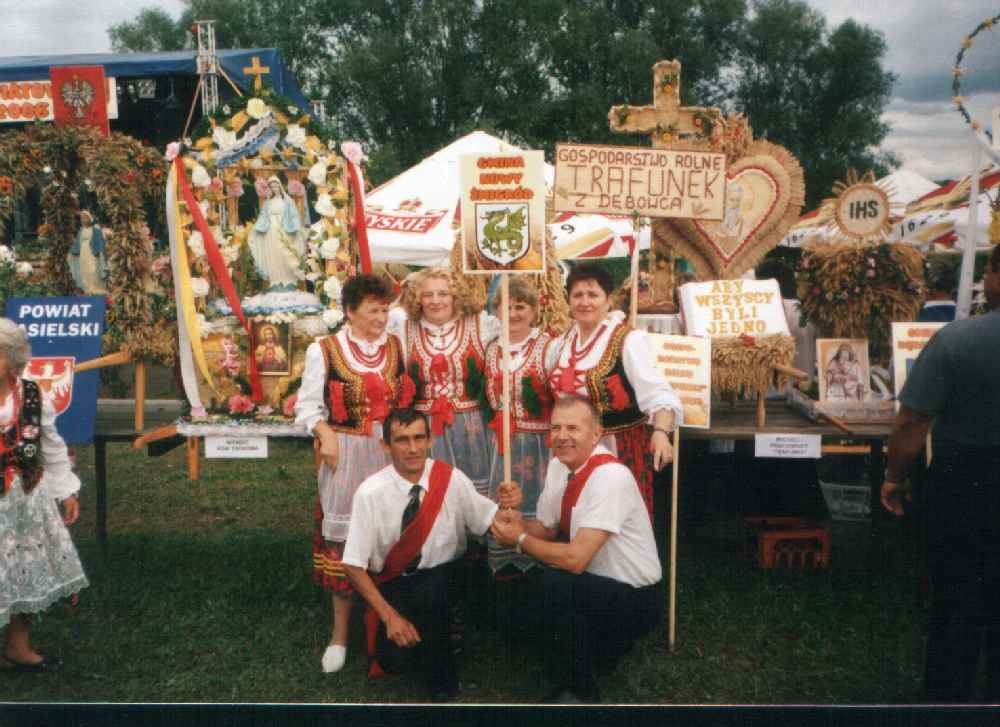 In November 2008, we applied to the parish priest for permission
to take over the care of the local Jewish cemetery. We received
it and now we are the legal guardians of the cemetery.
In November 2008, we applied to the parish priest for permission
to take over the care of the local Jewish cemetery. We received
it and now we are the legal guardians of the cemetery.
In this endeavour, we are also supported by the Jewish Heritage Foundation and the Rabbinical Commission in Warsaw. Mr. Marcin asked us to photograph all the matzevot for you. This is not a problem at all but I would like to know if you would like pictures of ALL stones or only those with inscriptions. On the foundation's webpage you can find photos of our cemetery and of some work we have started. Our association is renovating an old building which will house the Ethnographic Museum of the Zmigrod Area and will have a section devoted to the Jewish community.
We are looking for pictures of the Zmigrod square from before 1939. If you or your friends have such pictures, I would be very grateful if you could send us copies. More about the cemetery: in November we tidied up the road leading to it and in March we will trim the trees. We are now awaiting approval from the region's monuments curator. We want to restore the cemetary wall, recreate paths, clean the stones, put up signs etc. We are raising money for all this and I am wondering if you could make our goals known among the descendants of those from Nowy Zmigrod and see if anybody would like to contribute.
Please give me a snail mail address to which I can mail the
photos of the stones as emailing such a number will be
impossible. My address is: Jerzy Debiec,38-230 Nowy Zmigród, ul.
Podwale 18, Polska
mobile phone (48) 606953872 e-mail goknz@wp.pl
And then in November of 2009 I received this email: (translated by Monika Hendry--thank you again Monika!)
Here's Jerzy Debiec. We corresponded in the past and I sent you
some pictures of Nowy Zmigrod. If you need more info about the
town, please write to me, I will try to answer your questions. I
frequently check your Zmigrod page.
At the moment we are renovating Zmigrod's Jewish cenetery. Our
association volunteered to take care of it. We tidied up the
surrounding area, cut down the bushes and are sorting out the
inside of the cemetery. We have discovered parts of the original
stone wall of the cemetery. After consulting the chief rabbi of
Poland, we have arranged an road sign for the cemetery. We are
trying our best and are all volunteers. Regrettably, we have no
means to restore the wall, even though the fragments we have
discovered are in very good condition.
We would like to ask you for some financial assistance to
enable us to purchase stone to fix the wall. We undertake
to build the whole wall 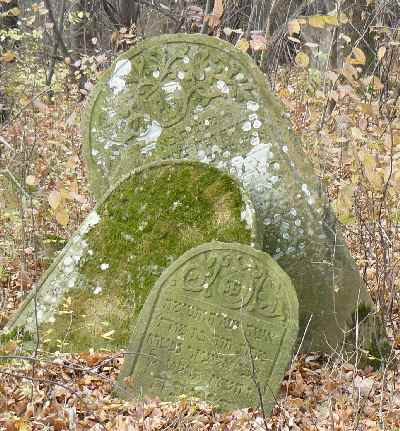 by ourselves. We trust that you and
the descendants of Zmigrod Jews would like to see the place of
eternal rest of relatives kept in a good condition. I appeal for
help and promise that we will spare no efforts to restore the
cemetery. I attach some pictures of the renovation.
by ourselves. We trust that you and
the descendants of Zmigrod Jews would like to see the place of
eternal rest of relatives kept in a good condition. I appeal for
help and promise that we will spare no efforts to restore the
cemetery. I attach some pictures of the renovation.
Regards, Jerzy Debiec
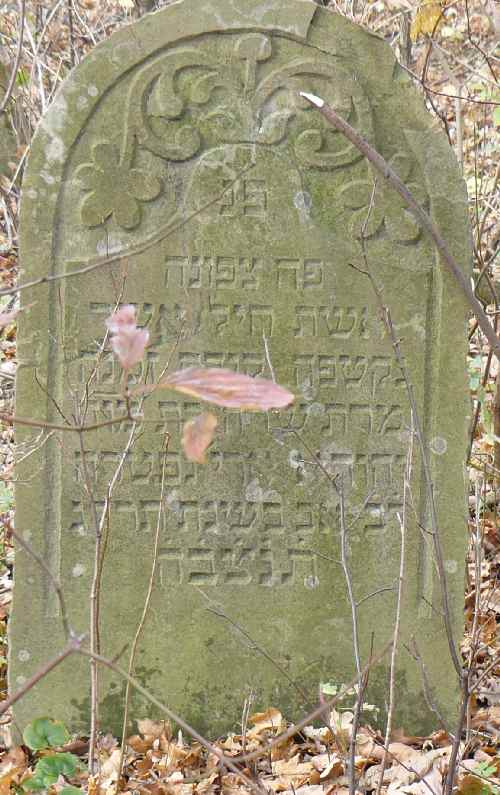
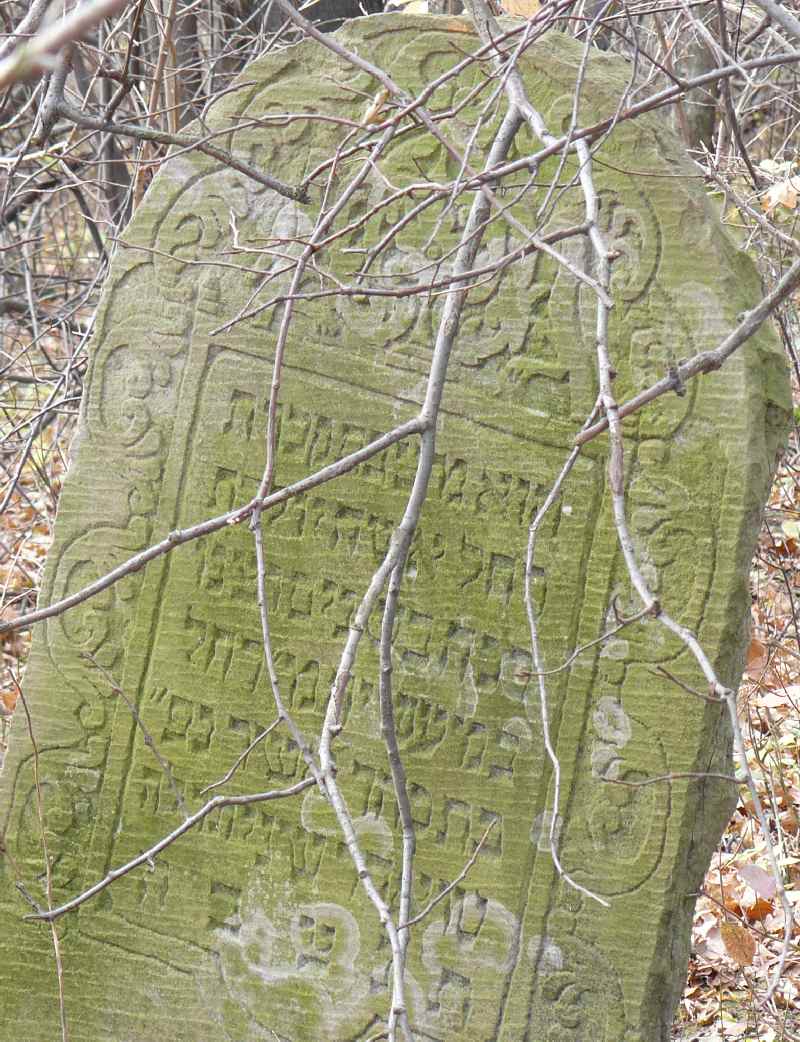
Can anyone translate for us?? Just email the
translation here, and thankyou.... 
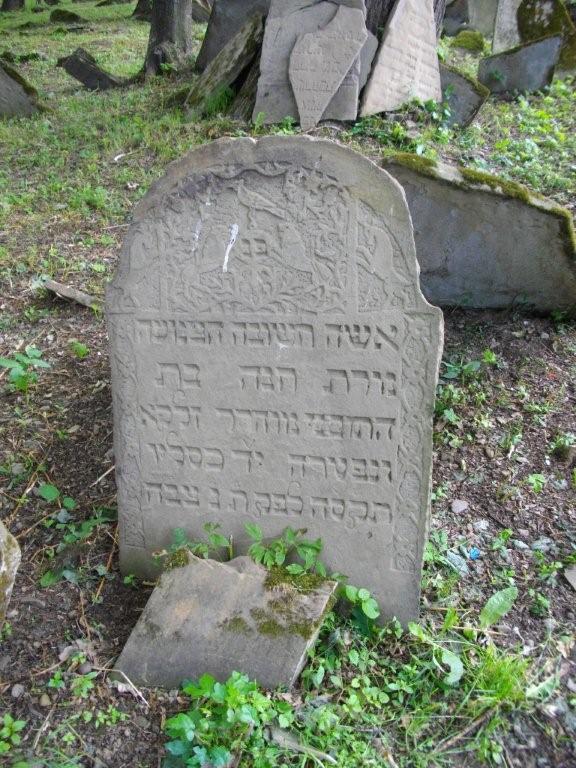

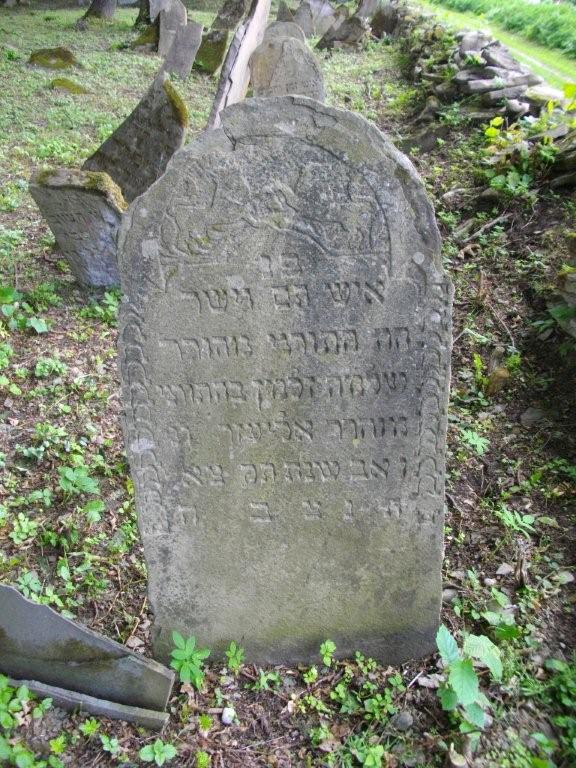
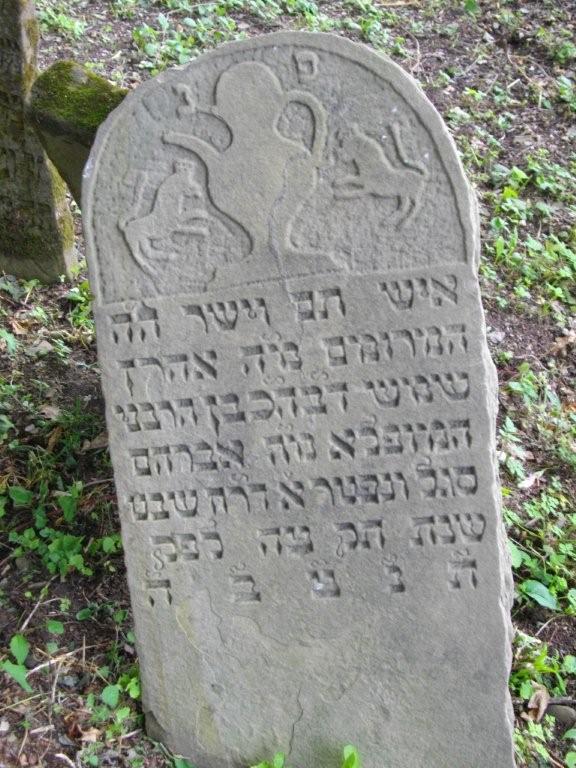
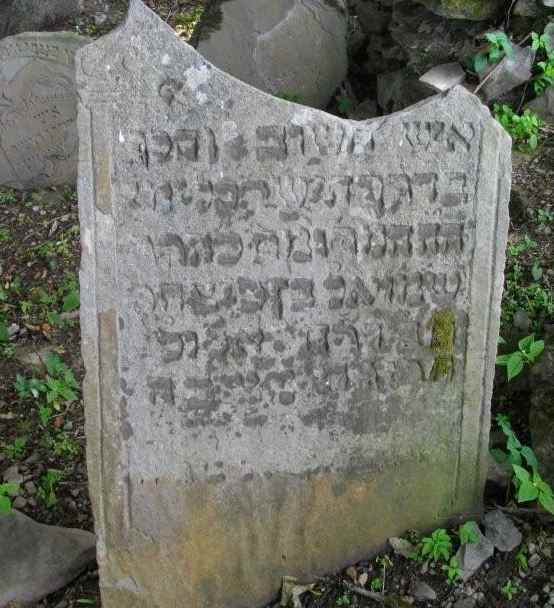
Thank you Rachelle
The Cemetery (Source: US Comm no. POCE000730; Krosno).
The cemetery is 1500 meters off the market square, by the road
to Jaslo. It is 18 km from Jaslo and 37 km from the larger town of
Krosno. 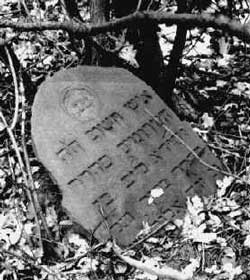
The cemetery is in a suburban area, on a hillside, isolated, with no sign or marker, reached by turning directly off a public road, but is open to all. There is no wall or fence or gate.
The size of the cemetery is 0.2ha. and was this size before WWII. There are approximately 200 gravestones, most in original position, most from 18th,19th and 20th century); the gravestones are made of sandstone, finely smoothed and inscribed; some flat stones have carved decorations. The inscriptions are in Hebrew.
The property is used only as a cemetery. The present owner is unknown. Properties adjacent are agricultural. The cemetery is visited rarely by private visitors. The cemetery has been known to have been vandalized during WWII and has no maintenance. Security, weather erosion, vegetation, (including young trees that are overgrown and breaking gravestones) and vandalism pose a very serious threat. Water drainage is a seasonal problem. The survey was completed on September 11, 1992 by Piotr Antoniock.
Many folks we have talked to have expressed an interest in cataloguing the Jewish stones which have survived the ravages of time and the destructive wars. Some day we hope to report that it was done.
And Jerzy sent us these fabulous photos of Zmigrod 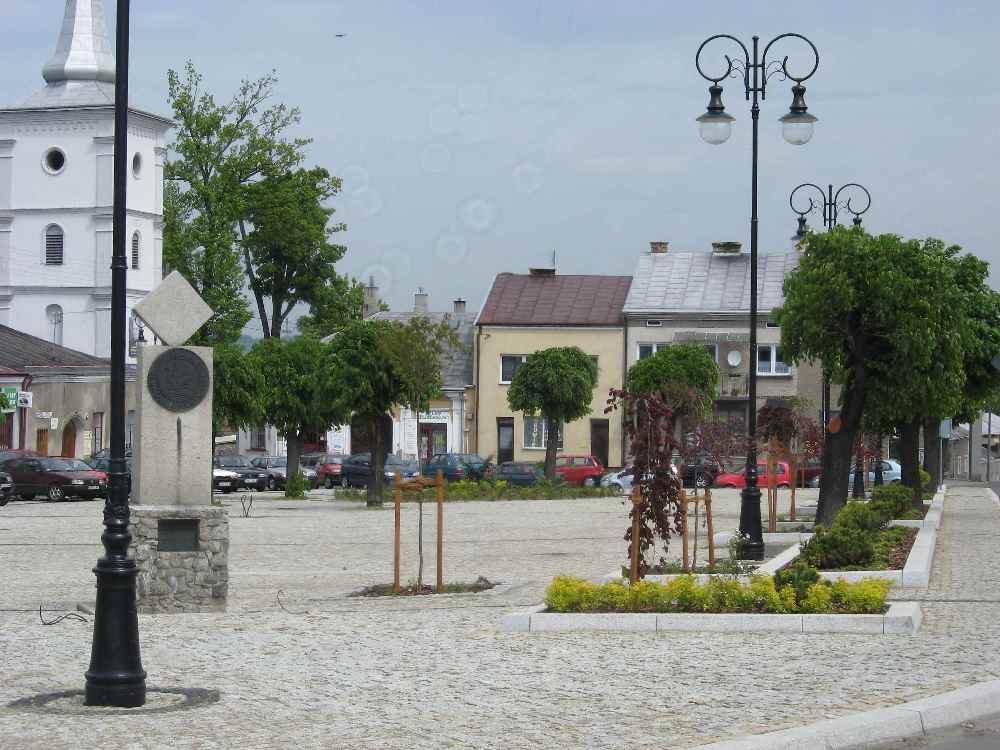
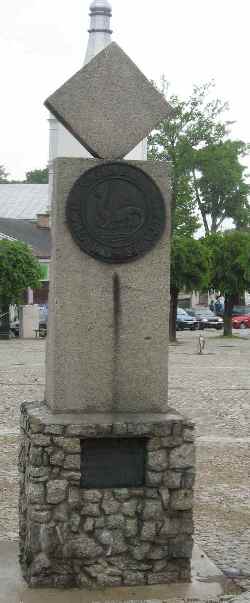
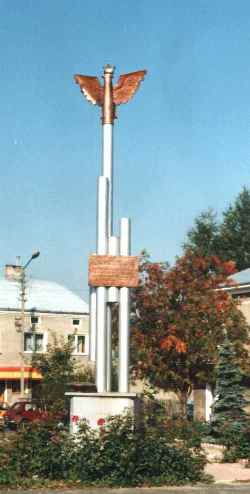
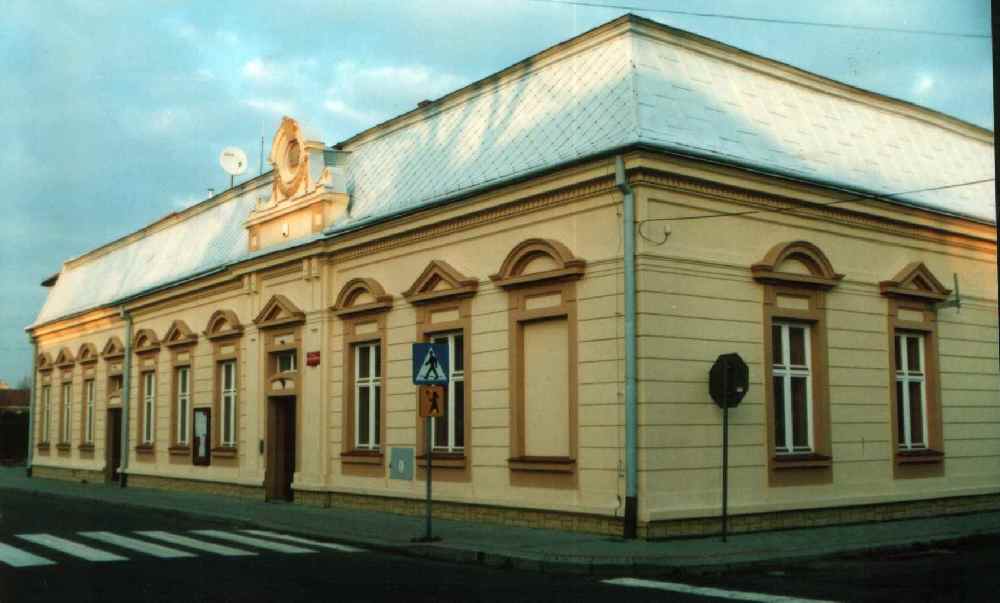
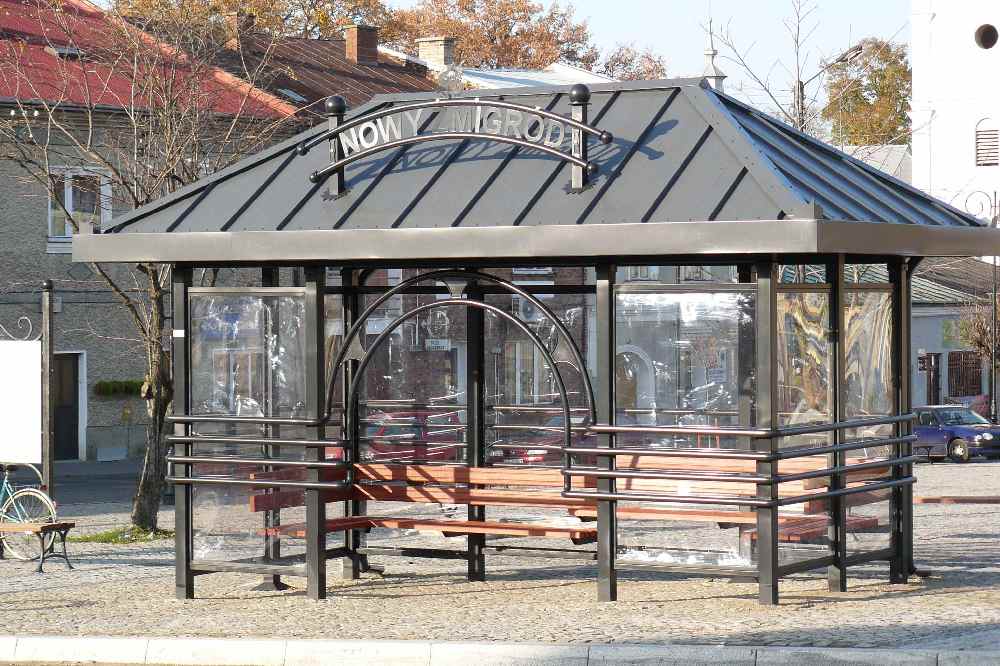
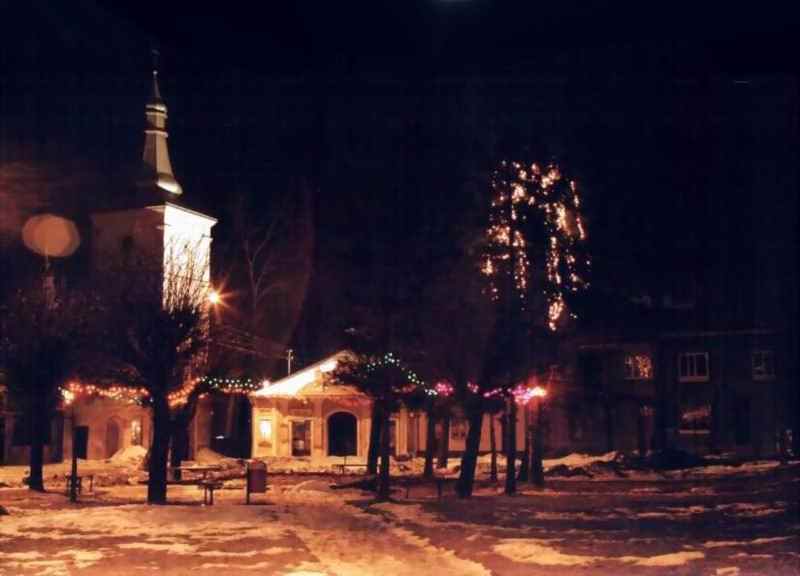
Return to Table of Contents

Nowy Zmigród is located in the Krosno region of
southeastern Poland on the east bank of the Wisloka River. Prior
to World War I, this area was part of the Austro-Hungarian Empire,
and known as the imperial province of Galicia. The surrounding
communities include Yaslo, Jedlicze, Krosno, Brzozow,
Rymanow, Sanok, Lesko, Bukowsko, Dukla, Krempna, Osiek
Jasielski, Debowiec . The map coordinates for Nowy
Zmigród are 49 37'/21 32'. 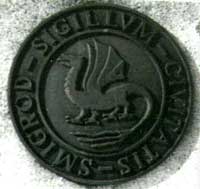
The coat of arms of Zmigród: Smigrod Sigillum Civitatis........
The Meaning of the name Zmigród: Gro'd refers to 'town' while 'Z'mi' refers to the Polish word 'z'mija' which means snake. Thus Zmigród means Snaketown or Vipertown. Note that the Z is pronounced 'Zh'. And, of course, Nowy is New. According to its web site, the town today has 9,821 residents and an unemployment rate of 15.4%. In addition to a City Hall, Police Station, Post Office and Family Medical Center, Nowy Zmigród has a Cultural Center, a Stadium, one restaurant, two bars and a school camp and the head of the village (Naczelnik) is Urzad Gminy. From old gazetteers we found that in 1900, out of a population of 2249, there were 1240 Jews. In 1921 Nowy Zmigród had 940 Jews. Although the history of the Jewish community goes back to the 16th century.....today there are no Jews.
For a wonderful commentary on Zmigród today, see our researchers travelogue below.
